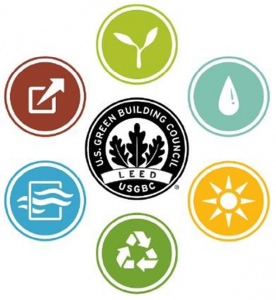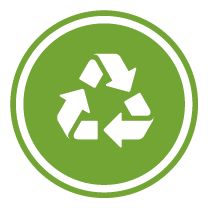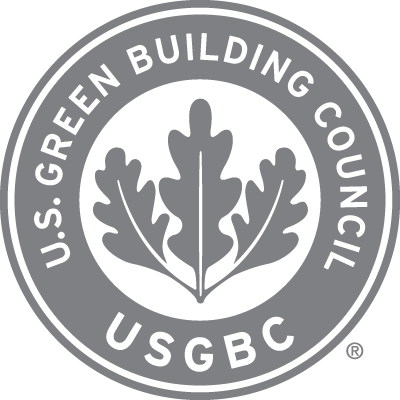Resysta® combines natural materials in a proprietary blend to achieve the look and feel of natural wood without impacting a single tree. Resysta is comprised of rice husks, an agricultural waste by-product, and is combined with a synthetic plastic polymer, calcium carbonate and other additives, the result is a product almost indistinguishable from exotic hardwoods.
Resysta is 100 % recyclable within the manufacturing process. Unlike wood, Resysta is water resistant and will not crack or splinter, resulting in a much longer life span.
Through material innovation and product design, Resysta effectively combines nature and science to produce a beautiful, durable product at a competitive price. Resysta can earn points under various third party sustainable design and construction programs.

LEED, or Leadership in Energy and Environmental Design, is changing the way we think about how buildings and communities are planned, constructed, maintained and operated.

The Sustainable Sites (SS) category rewards decisions about the environment surrounding the building, with credits that emphasize the vital relationships among buildings, ecosystems, and ecosystem services. It focuses on restoring project site elements, integrating the site with local and regional ecosystems, and preserving the biodiversity that natural systems rely on.

The Materials and Resources (MR) credit category focuses on minimizing the embodied energy and other impacts associated with the extraction, processing, transport, maintenance, and disposal of building materials. The requirements are designed to support a life-cycle approach that improves performance and promotes resource efficiency. Each requirement identifies a specific action that fits into the larger context of a life-cycle approach to embodied impact reduction.

Innovation (IN) – Sustainable design strategies and measures are constantly evolving and improving. New technologies are continually introduced to the marketplace, and up-to-date scientific research influences building design strategies. The purpose of this LEED category is to recognize projects for innovative building features and sustainable building practices and strategies
RESYSTA Decking can qualify as a non-roof strategy for reducing the urban heat island effect due to the qualifying Solar Reflectance Index value of certain colors of the Resysta Coat Layer (RCL)
RESYSTA products are made from 25% rice husks. Rice husks are derived from rice plants, which are harvested within a 10-year cycle.
Resysta products are made from 25% rice husks, an agricultural waste by-product of rice, which is a rapidly renewable material.
LEED is a rating system developed by the United States Green Building Council to measure the environmental impact of building design, construction and operations.
LEED certification is measured in points and is based on how much a building reduces operating costs and overall impact on the environment.
LEED is a rating system developed by the United States Green Building Council to measure the environmental impact of building design, construction and operations. LEED certification is measured in points and is based on how much a building reduces operating costs and overall impact on the environment.
LEED New Construction and Major Renovations Certificates are awards according to the following scale:

Beginning on November 1, 2016, the United States Green Building Council (USGBC) LEED v4 will take effect. The sunset date – the last day projects can submit for certification – under LEED v2009 is June 30, 2021. Projects pursuing LEED v2009 certification must have been registered with USGBC by October 31, 2016.